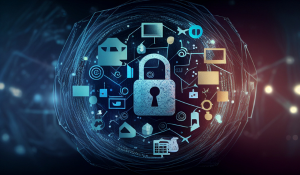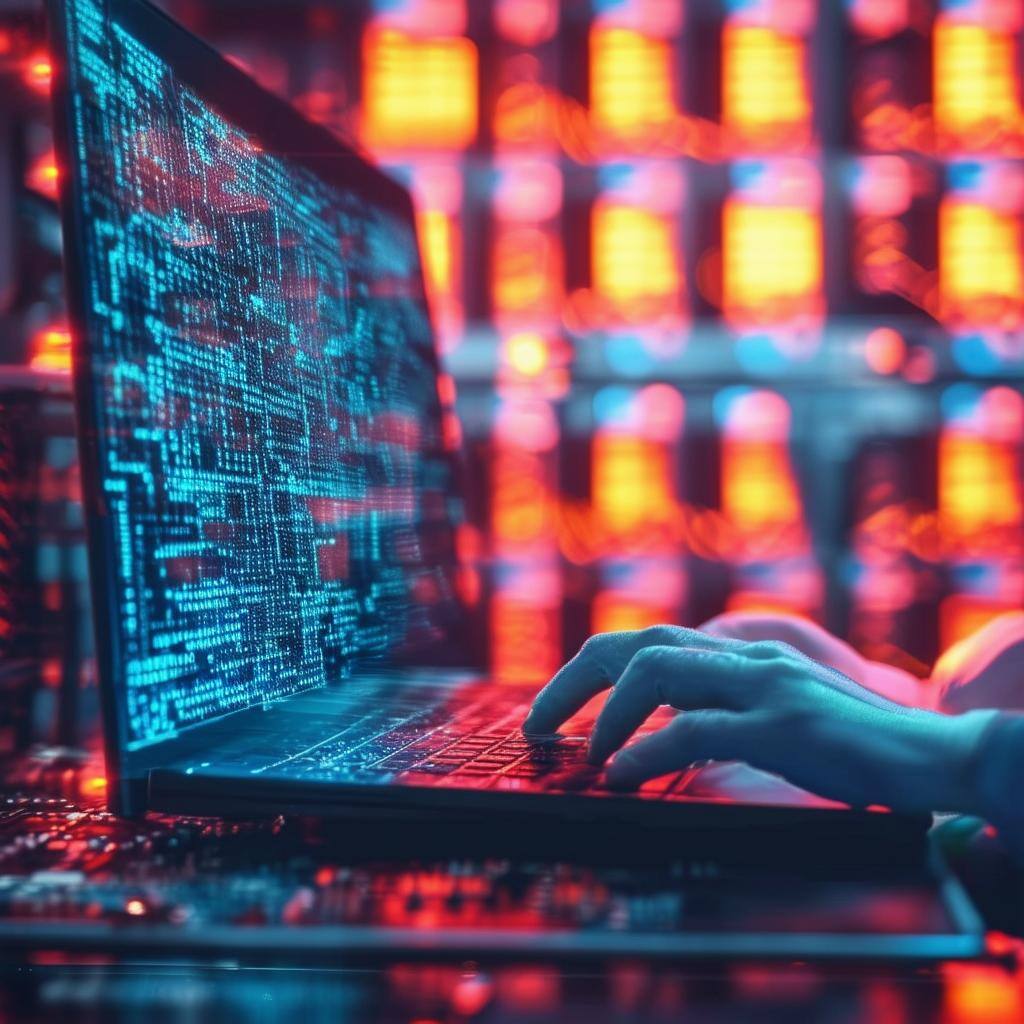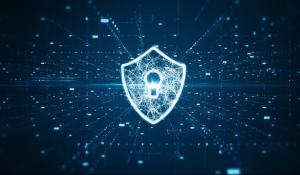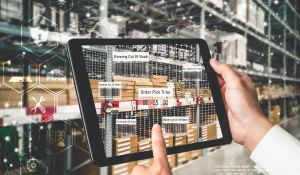5 IT Security Trends for 2024
As we step into the digital frontier of 2024, the landscape of cybersecurity continues to evolve at an unprecedented pace. With each passing year, ...

As we move into 2025, the digital landscape continues to evolve, bringing new opportunities and challenges for businesses, governments, and individuals alike. With cyber threats growing in complexity and frequency, traditional approaches to cybersecurity are no longer enough. Instead, organizations are embracing more holistic strategies to safeguard their operations.
| TABLE OF CONTENTS |
The article highlights key trends for cyber security in 2025, including the shift towards cyber resilience, adopting an ecosystem perspective, securing supply chains and prioritizing cloud security. These trends highlight the need for proactive, collaborative, and adaptive approaches to stay ahead in the ever-changing threat landscape.
One of the defining cybersecurity trends for 2025 is the transition from traditional cybersecurity measures to a more comprehensive focus on cyberresilience. This shift reflects the growing realization that no organization, regardless of its size or resources, can guarantee complete immunity from cyber threats. With the increasing frequency, sophistication, and scalability of cyberattacks, the emphasis is no longer solely on preventing breaches but on ensuring the ability to adapt, recover, and continue critical operations when they occur.
For both companies and government entities, the primary concern has evolved. The question is not how adept they are at detecting threats but how effectively they can respond to and recover from incidents. The speed and efficiency with which core business operations are restored after a breach have become critical indicators of a robust cybersecurity posture.
Moreover, it is now widely accepted that total protection of every process and the entire value chain is impractical, if not impossible. Instead, cybersecurity in 2025 is increasingly viewed through the lens of risk management. Organizations must prioritize identifying the processes essential to their operations and directing their security investments toward safeguarding these critical areas. By focusing on resilience rather than just prevention, businesses and governments can better mitigate risks and ensure continuity, even in the face of inevitable cyber incidents.
This paradigm shift towards cyberresilience underscores the importance of proactive planning, scenario testing, and building adaptive systems capable of withstanding and recovering from attacks. As a result, cyberresilience is emerging as the cornerstone of modern cybersecurity strategies in 2025 and beyond.
As cloud adoption continues to accelerate across industries, prioritizing cloud security has become a non-negotiable aspect of cybersecurity trends for 2025. Companies, governments, and public entities are increasingly migrating their critical systems and sensitive data to cloud environments, drawn by the scalability, flexibility, and cost-effectiveness these solutions offer. However, this shift has also made the cloud a prime target for cybercriminals, who exploit vulnerabilities such as misconfigurations, weak access controls, and unmonitored activity to breach systems and access sensitive information.
To mitigate these risks, organizations must focus on implementing comprehensive cloud security strategies. These include robust measures such as encryption, multi-factor authentication, and continuous monitoring of cloud environments to detect and respond to potential threats in real time. Additionally, adopting zero-trust frameworks ensures that no user or system is inherently trusted, enhancing protection against unauthorized access. Collaborating with trusted cloud service such as DriveLock providers that prioritize security and compliance can further bolster defenses. In 2025, prioritizing cloud security is not just about safeguarding assets; it is fundamental to ensuring operational resilience, maintaining stakeholder trust, and thriving in an interconnected and rapidly evolving digital ecosystem.
One of the most critical cybersecurity trends for 2025 is the shift toward an ecosystem perspective in managing cybersecurity. As organizations grow more interconnected through shared platforms, supply chains, and global partnerships, security cannot exist in isolation. A single weak link in the ecosystem can jeopardize the entire network. To address this, companies are moving away from siloed approaches and adopting a collaborative, holistic perspective that emphasizes securing the entire digital ecosystem. This includes extending cybersecurity measures beyond their own operations to encompass third-party vendors, contractors, and other partners, ensuring that every entity in the ecosystem adheres to high security standards.
To enhance resilience, companies must move away from a culture of secrecy and embrace transparency and collaboration. Sharing intelligence about emerging threats, vulnerabilities, and mitigation strategies can significantly reduce the risks for all stakeholders involved. This collaborative approach fosters faster detection of potential breaches and more effective responses, preventing widespread damage. The aviation industry offers a prime example of this mindset, where competing airlines, manufacturers, and regulatory bodies routinely share safety data and threat intelligence to protect passengers and operations. Applying this model to cybersecurity ensures that even competitors can work together to safeguard the ecosystem against cyber threats.
In 2025, cybersecurity trends demand that resilience becomes a shared responsibility. Governments, businesses, and industry groups must actively promote platforms for secure communication and threat sharing, encouraging organizations to prioritize collective security over isolated protection. By treating cyber threats as a shared challenge, entities can develop strategies that not only address immediate risks but also build long-term resilience. This shift toward ecosystem-wide collaboration represents a significant evolution in how industries approach cybersecurity, paving the way for a safer and more interconnected digital future.
One of the most pressing cybersecurity trends for 2025 is the increasing need for companies and public governments to build resilience against supply chain attacks. Cybercriminals are shifting their focus from directly targeting well-defended organizations to exploiting vulnerabilities in their supply chains.
These attacks often infiltrate through third-party vendors, software providers, or outsourced services, leveraging less-secure partners as entry points to disrupt operations or exfiltrate sensitive data. The interconnected nature of global supply chains makes these threats particularly dangerous, as a single compromised partner can ripple across the entire network, affecting multiple entities simultaneously.
Organizations must take a proactive approach to secure their supply chains. This begins with conducting thorough risk assessments to identify vulnerabilities in their vendor networks and implementing stringent security requirements for all third-party partners. Measures such as multi-layered access controls, continuous monitoring, and regular audits are crucial to ensure compliance with security protocols. Additionally, companies and governments are increasingly adopting zero-trust frameworks that limit the trust placed in external entities, verifying every interaction to minimize potential exposure. By integrating supply chain security into their overall risk management strategies, organizations can significantly reduce the likelihood of successful attacks.
Building resilience against supply chain attacks also requires collaboration and information sharing among stakeholders. Governments, regulatory bodies, and industry groups can facilitate platforms where organizations share insights about emerging threats, attack vectors, and mitigation strategies. This collective intelligence enables faster detection and response to supply chain vulnerabilities, bolstering security for all involved. As part of the cybersecurity trends for 2025, this collaborative approach emphasizes the importance of a unified defense, where every participant in the supply chain contributes to a more secure and resilient ecosystem.
Emerging technologies, shifting threat vectors, and evolving regulatory frameworks are shaping the strategies organizations must adopt to stay ahead of cybercriminals and protect sensitive data effectively.
Malicious Use of Company-Internal GenAI Chatbots: Malicious actors are increasingly exploiting company-internal GenAI chatbots to bypass traditional breach-detection mechanisms. By leveraging these tools, attackers can scan sensitive data discreetly, using the chatbot's natural language processing capabilities to identify high-value assets without triggering the alarms that are often activated by large-scale or anomalous file-scanning activities. As these AI-powered tools become more integrated into business operations, they inadvertently provide cybercriminals with a sophisticated method to evade detection.
Strong Reliance on Foreign Cybersecurity Products: The German “Mittelstand” (small and medium-sized enterprises) remains heavily reliant on foreign cybersecurity products, a trend that shows no signs of abating. This dependency stems from the significant gap between the advanced capabilities of international cybersecurity providers and the domestic industry's current offerings. Bridging this gap would require an immense investment in research, development, and infrastructure—a challenge that many experts view as unrealistic within the current economic and regulatory landscape in Germany and Europe. As a result, these companies will likely continue to depend on established foreign solutions to secure their systems, despite potential risks related to supply chain vulnerabilities and geopolitical factors.
The Rise of Passwordless Authentication: This trend is expected to accelerate throughout 2025, as more organizations embrace passwordless options to reduce phishing risks and improve user experiences. However, it would be premature to declare the end of passwords entirely. Many systems, particularly legacy infrastructures and smaller platforms, still rely on traditional password mechanisms, and passwords remain a critical fallback option in cases where passwordless solutions are not feasible or widely adopted.
The cybersecurity trends of 2025 emphasize a critical evolution in how organizations approach security challenges. From the shift toward cyberresilience and a culture of sharing to prioritizing cloud security and securing supply chains, these developments underscore the importance of adaptability, collaboration, and foresight. Emerging issues, such as the exploitation of GenAI tools and reliance on foreign cybersecurity solutions, further highlight the complexity of the threat landscape.

As we step into the digital frontier of 2024, the landscape of cybersecurity continues to evolve at an unprecedented pace. With each passing year, ...

In an age of increasing digital interconnectedness, businesses find themselves constantly on guard against a wide array of cyber threats. Among...

In our increasingly interconnected world, where data flows freely and digital landscapes expand at a breakneck pace, the need for robust...